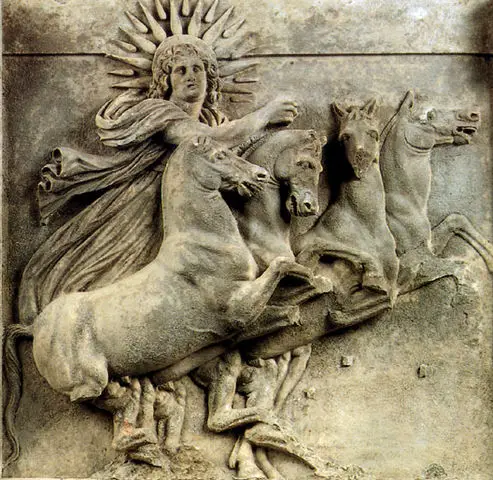| Date for Invention | 1820-1840 |
| Further Reading | Charles Babbage: How He Developed The Worlds First Computer and Ada Lovelace: 3 Impacts From The Worlds First Programmer |
In the early 19th century an English mathematician named Charles Babbage would invent two very different machines that helped him perform advanced calculations. These two machines were called the Difference Engine and the Analytical Engine. Both of these advanced machines are incredibly different for 3 major reasons.
There are 3 main differences between Babbage’s Analytical Engine and his Difference Engine. First, the Difference Engine could only do one mathematical operation while the Analytical could perform up to 4. Second, the Difference Engine could only perform addition while the Analytical could perform all four basic math functions. Third, the Analytical Engine contained memory so it could build upon previous data sets and perform extremely advanced calculations.
Today these two machines remain some of the most advanced built during the Victorian era. To give you an idea Charles Babbage was designing primitive computers to perform advanced calculations before the world had cars. He would have met soldiers who fought against George Washington during the American War for Independence. It is astounding that such machines were built in the 19th century.
Here at The History Ace I strive to publish the best history articles on the internet. If at the end you enjoyed this article then consider subscribing to the free newsletter and sharing around the internet.
Without further ado, here are the 3 main differences between the Analytic and Difference Engines.
The Difference Engine Could Only Do One Mathematical Equation While The Analytical Could Do 4
One of the main differences between the Analytical and Difference Engines was the amount of equations the machines could perform.
The Difference Engine could only perform one equation. This was because the Difference Engine was built by Babbage as a way to dramatically accelerate the time it would take him to add together a series of numbers.
The Difference Engine was extremely good at providing a sum of a list of numbers. Normally this would take one person an extended period of time. The Difference Engine did it in a fraction of that.
However, this pales in comparison to the computational ability of the Analytical Engine.
The Analytical Engine could easily perform up to 4 equations simultaneously. This allowed Babbage to input a series of strings of numbers. In theory with straight addition the Analytical Engine was about 4 times as fast as the Differential Engine.
As such one of the main differences between the Analytical and Difference Engines was their maximum amount of equations that could be simultaneously run.
The Difference Engine Could Only Perform Addition While The Analytical Could Perform All Four Basic Math Functions
One of the main differences between the Difference Engine and The Analytical Engine was the ability to perform more than just addition.
The Difference Engine was designed to only perform simple addition. Here Babbage would input a series of numbers and the Difference Engine would spit out a sum at the end.
The Difference Engine was groundbreaking for its time. However it paled in comparison to the ability of the Analytical Engine.
The Analytical Engine could perform addition, subtraction, multiplication, and division with ease. This meant that for the first time in human history a machine could perform advanced math calculations automatically.
The Analytical Engine was so advanced that it was never fully built. Babbage would self fund his machine and only had a portion of it built before his death in 1871. The British Association for the Advancement of Science in 1878 attempted to finance the rest of the construction but realized it was far too complex without Babbage.
Still one of the main differences between the Difference Engine and Analytical Engines was the limiting factor of basic math functions. The Difference Engine could perform only addition while the Analytical Engine could perform all four basic math functions.
The Analytical Engine Contained Memory So It Could Build Upon Previous Data Sets And Perform Extremely Advanced Calculations
One of the most important differences between the Analytical Engine and the Difference Engine was the addition of storage memory to the Analytical Engine.
In 1837 Charles Babbage came up with a rudimentary way to store data and variables that the Difference Engine would output. Babbage here decided that he could build upon this storage of data. From this came the most important difference between the Analytical Engine and Difference Engine; the concept of memory storage.
This memory storage meant that Charles Babbage could create the world’s first software program that would run calculations in a loop. Today all modern computers use this concept.
The reason that Charles Babbage created this primitive computer memory was because it allowed his Analytical Engine to build upon previous sets of data. Babbage could input one set of data and set it to constantly multiply by a series of numbers.
The Analytical Engine would constantly build upon a previous number set until either interrupted or reaching the end of its loop. This was groundbreaking and marked the world’s first computer mechanism.
The Difference Engine could only perform basic calculations. Each data set at the end of the calculation would have to be written down by hand and built upon. The Analytical Engine does all of that automatically with the introduction of memory.
As such the concept of computer memory remains one of the 3 main differences between the Difference Engine and the Analytical Engine.
Conclusion
There you have it; an entire article dedicated to the 3 differences between the Analytic Engine and the Difference Engine.
The fact that these machines were created around the same time as steam boats remains astounding. To this day these machines are incredibly complex. Over 100 years later in 1943 Konrad Zuse would build his Z3 general computer that mimicked Babbage’s Analytical Engine. Several historians have theorized what would have happened if Babbage’s Analytical Engine would have been introduced into British society during the height of the Industrial Revolution.
I hope you enjoyed this article. Here at The History Ace I strive to publish the best history articles on the internet. Feel free to sign up for the free newsletter and share around.
Further, you can check out some of the other articles below.
-
How The American Revolution Changed The World

Here is how the American Revolution changed the world. Many people are not aware of just how important this event actually was.
-
Why The Roman People Loved Chariot Racing

Why did the Roman people love chariot racing? Well it all comes down to these 3 reasons.
-
The Design and Color of Roman Chariots

What was the design and color of Roman Chariots? Were they faster or slower then normal chariots? Well here is everything!
Sincerely,
Nick